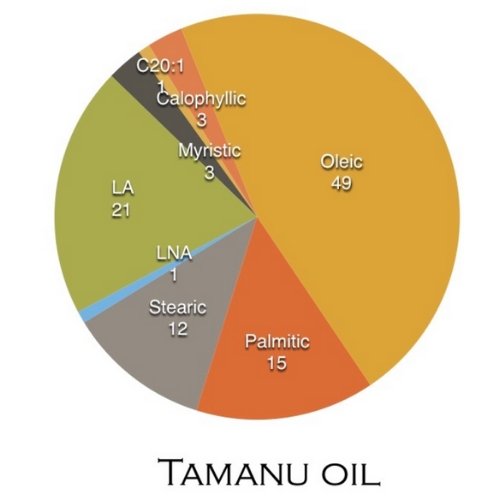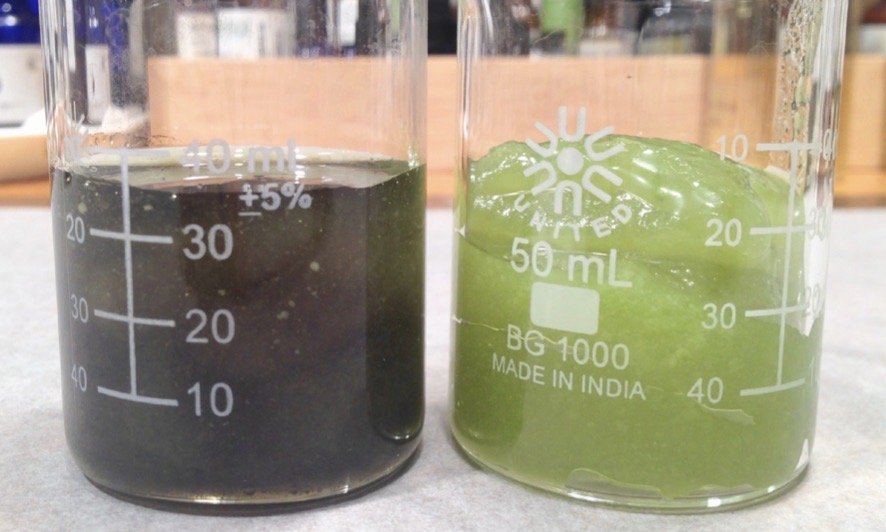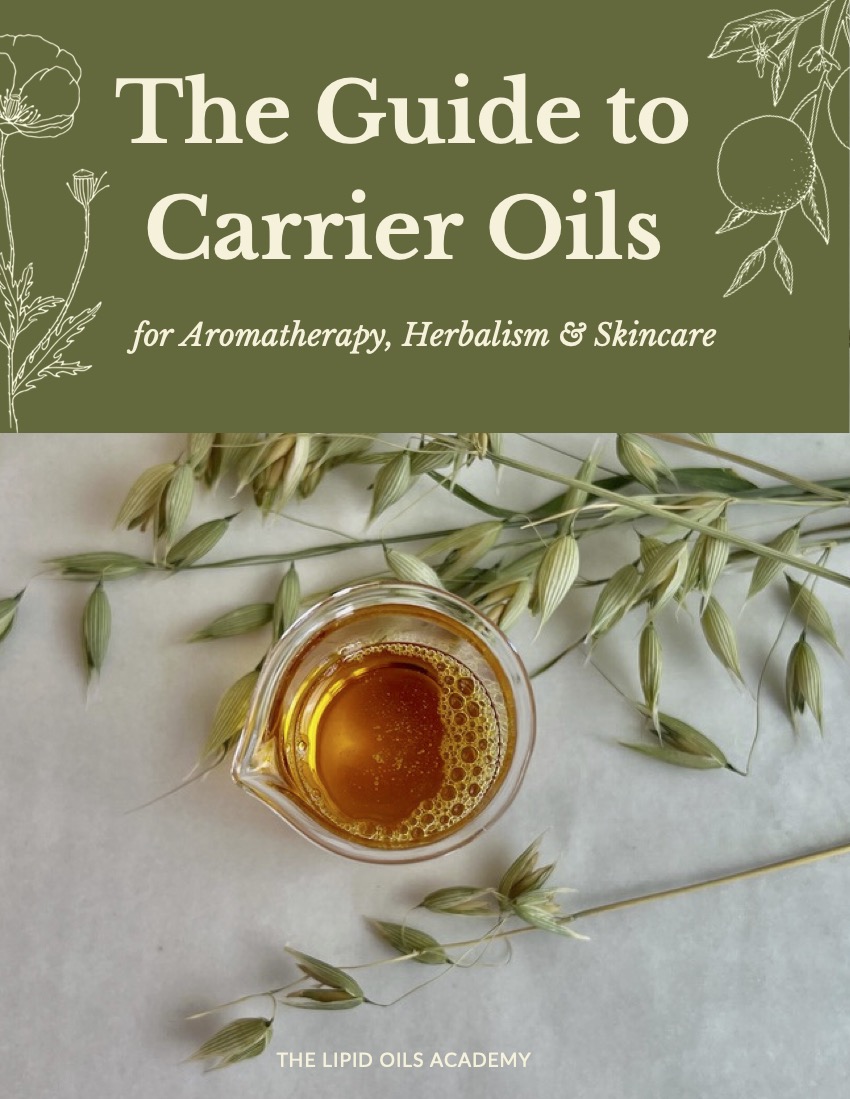One of my favorite oils, this one from the Pacific basin, is Tamanu Oil. The tree has so many ‘common names’ over such a wide area, there is no other easy way to describe it except to jump to the Latin even if it is a mouthful of a name.
Caulophyllum inophyllum
Common Names
The tree, Caulophyllum Inophyllum has common names where it grows around the Pacific.
Here’s a few:
- Beach calophyllum
- Alexandrian laurel
- balltree
- beautyleaf
- Borneo-mahogany oil tree
- Indian-laurel
- Indian doomba
And that’s just a few common names from the tree that produces tamanu nuts.
The oil we get from the nuts has a whole different set of common names.
- Here’s a few:
- Tamanu, in Tahiti;
- Kamanu, in Hawaii;
- ‘fetau, in Samoa
- faraha, in Madagascar
Caulophyllum Inophyllum oil also goes by the name Dilo oil in Fiji,
But if you’re looking to order online, you’ll most likely find this oil under the names Tamanu and Foraha.
Tamanu Oil for Skincare
What is so special about the oil?
Firstly it is thick and viscous but not solid like cocoa or shea butter. It has an interesting smell, kind of nutty, with a pungent but ‘healing’ scent.
Naturally colored green and very thick, Tamanu will knit up just about anything going on on the skin. It even has a reputation of successfully treating diseases like leprosy.
This oil shares the usual triglycerides and plant compounds customarily found in carrier oils and other vegetable oils, Oleic, Linoleic, Palmitic and Stearic acids.
A Unique Fatty Acid Makeup
But, unique to Tamanu, is a wholly new fatty acid, Caulophyllic acid. It also contains glyco-lipids, which are lipids with starches attached, phospholipids, and a new compound, calophyllolide, an anti-inflammatory agent first found in this oil.

Tamanu Oil Fatty Acid Makeup
INCI – Caulophyllum inophyllum
With this unusual composition, Tamanu absorbs deeply into all three layers of the skin where it has been demonstrated to rapidly regenerate new skin, repair nerves and diminish scarring.
Useful in the treatment of sciatica, rheumatism and shingles, it also treats eczema, psoriasis, chapping, burns, cracked skin, fissures, and infections and historically, even leprosy. Open wounds and serious breaches of the body have been repaired by applications of the oil. It is anti-inflammatory, anti-bacterial and analgesic while being non-irritating.
Green Gold
The oil is referred to as “green gold” for its color and healing properties.
Of the botanical family Clusiaceae, which includes Mangosteen and St. John’s wort, it is a rightful member of this healing, nutritious and therapeutic family of plants.
Add tamanu oil to your recipes, and look for it on ingredient labels to find powerful treatments for skin problems.
And on already healthy skin, tamanu oil’s wonderful properties will maintain a healthy glow.
Have you used Tamanu oil yet? share your experiences with this lovely green lipid in the comments below.



Tamanu oil is now a staple in my massage studio. We custom blend every massage oil, and this tends to go into any blend for a client with a lot of inflammation. I like to work more gently than heavily and this oils seems to do a lot of the work for me. It seems to get into and stay with a client for a while. I can also say that since adding it to my practice my hands have never felt better after work. I love to hear that it repairs nerves as my speciality is working with people who have fibromyalgia. This is largely a nervous system issue and anything we can do to soothe, nourish, repair the nerves is a big deal.
Stephanie, thanks for sharing your experience with tamanu oil. It is a really good one.
Hi, I’ve been using Tamanu with Rosehip and Apricot Kernel oil to heal old facial scars. I believe, the skin doesn’t feel oily rest of the day, and sebum production is under control (may be subject to age? I had very oily skin when I was around 20).
The one I have is deep green in color and viscous. I don’t dislike the smell but it is like roasted nutty aroma. I am pretty ok with this. It’s been 2.5 months I been using this recipe.
i do the e version of the Power of the seed book
Can you explain the differences in color in the picture used for this post? I have tamanu, but mine is very brown sort of like the sample on the left. I had no idea it could be green like the sample on the right! Is it acceptable for it to be brown in appearance?
Tamanu seems to come in many colors of green and forms, semi liquid and quite hard but not solid – it is going to depend on where it is grown and how the oil was processed – was it refined or not. Order very small amounts or samples to see what your supplier has in stock before stocking up. The photo is from two very different batches from different suppliers a year or so apart. Since then, I have gotten tamanu with even more differences.
I love Tamanu but it’s very thick at times and doesn’t slide that easily. What other carrier oil would you mix it with? Almond? Jojoba? Apricot? Thank you!
I was first introduced to tamanu oil when we visited a vanilla plantation in Tahiti last January. After the vanilla presentation we were treated to information on tamanu oil. I had itchy sun poisoning on my arms and after hearing how good the tamanu oil was for skin conditions, I purchased a small bottle. Really worked on my arms and on anything itchy or owie. I was panicking when my bottle started getting low last month but I found organic tamanu at Mt. Rose Herbs. My first batch of goats milk soap made with some tamanu oil has just finished curing and is ready to use. Really looking forward to trying this soap!
I was first turned onto Tamanu oil when I purchased a skin care kit from Lauren Hutton’s line. It was many years ago and I fell in love with it, and they stopped carrying it. They had a soap which I am not kidding, I still miss. She was turned onto the oil during a safari type trip where the locals gave her some because her face was so damaged from the elements. I use the oil now on my face with a hydrosol depending on the season (cucumber hydrosol in summer, german chamomile in fall, rose in winter, etc…) I’m happy to know more about it. Thanks Susan!
Thank you so much for this blog post. I think this oil would be great in my ouch salve and im so glad to read about it.
This sounds like an amazing oil😘My son has severe psoriasis. His whole body is covered, including head and genitals 😟Some of the wounds on his arms and legs are very large and he is in so much pain. I made a spray of Frankincense, Copibpa and Peppermint with Blackseed. Was thinking of getting some Emu, but this sounds like a great addition as well ☺️
I love Tamanu oil. I use it for wounds (not deep), abrasions, burns, in sales and lip balms. I always carry a small bottle with me and have frequently let my co-workers use it for their boo-boos. I am in love with it. However it is now good to know that it is possible for people to be allergic to it. I have also used it on poison ivy and it takes care of the itch for about four hours.
I use it and love it!
I have successfully used it on my dog to treat Minge.
I also use it on my partner to heal deep wounds.
He has to get some skin areas burnt as part of a skin cancer prevention programm
I recommend this lovely oil to everyone!
But like you Shannon I have had a client who had an allergic reaction to it, so I now keep that in mind.
I absolutely love the aroma of Tamanu oil, although I know some folks don’t share that opinion. It’s been a long time since I’ve used it, so I think I need to take it out of the fridge and work with it again. Thank you for this informative blog.
I have tried tamanu before and it seems like I am the only person on earth allergic to it! I have tried a couple of brands, in case I had stumbled onto a bad batch, but I reacted every time. I am so sensitive that I reacted when I put on a sweater that I had worn while patch testing tamanu on the inside of my arm. I am now scared to work with this oil, but luckily none of my clients are allergic. I am sad to miss out on such a lovely lipid.
Hi Shannon, well at least you know that this oil isn’t for you! Good thing there are lots of other oils to work with. All the best in your lipid adventures.